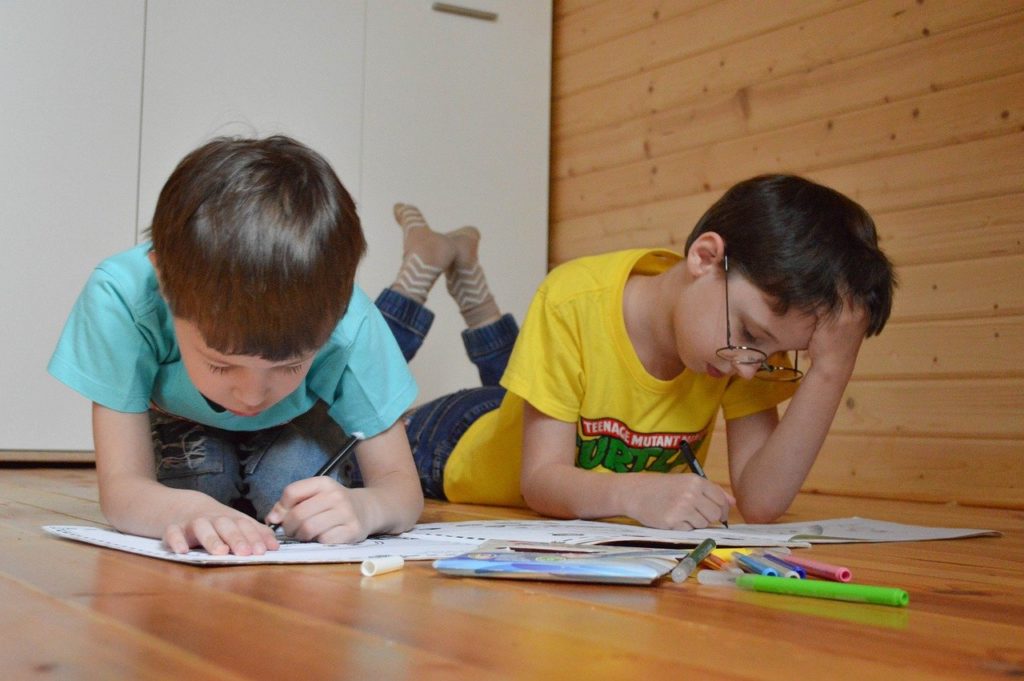Adults are still learning how to cope with the new challenges of working from home during the pandemic. So are students who are still trying to navigate distance learning.
When Staying More Time Home Doesn’t Guarantee Rest
When parents struggle to set boundaries between work hours and household responsibilities, children and teens are having trouble keeping a schedule. Before the pandemic hit the world, students often relied on their everyday routine, such as waking up for school at a set time.
Today, distance learning has provided students the freedom to do their homework wherever and whenever they deem convenient. For some, they view quarantine measures and distance learning as extended weekends. On the upside, they’re spending more time doing what they love with their family. The downside is that they’re staying up longer. With their circadian rhythm thrown off balance, the result is the sleep that is less than the recommended eight to ten hours.
Stanford Medicine considers sleep deprivation as an epidemic among teens, and this doesn’t bode well, especially during a pandemic. The novel coronavirus has already brought in a lot of stressors, from struggling economies to job insecurity. These frustrations caused by an uncertain future can be compounded and lead to even bigger issues when children aren’t getting the rest they need.
Students who don’t get enough sleep, whether they’re teens or preteens, can suffer various negative consequences. Chief among these issues are:
- Irritability
- Inability to focus
- Difficulty learning
- Forgetfulness
- Low motivation
- Hazards caused by drowsiness
- Poor performance in school
- Anxiety
- Depression
The effects are arguably worse with younger children. According to a 2017 study by a Harvard Medical School pediatrician, lack of sleep among children in preschool or early school age increases the risk of poor neurobehavioral function. That includes attention, emotional control, and peer relationships.

When Counting Sheep Doesn’t Work
If you have a child or teen at home who is having a rough time getting enough sleep, it’s best to have them return to a healthy sleeping schedule. Here’s how you can help:
- Invest in a new bed
Disrupted schedules notwithstanding, when people don’t feel well-rested when they wake up, it’s more likely their current bed is causing issues. Research has proven that a new mattress can improve sleep quality and even reduce stress. A study from Oklahoma State University revealed that the research participants who slept on old mattresses (five to nine years old) experienced discomfort. But when they moved to a new bed, the results were staggering; they reported a 55 percent improvement in sleep quality and a 48 percent increase in back pain relief.
To know if your child’s bed is still good, check for lumps and sags. If these are present, they’re signs that your child’s bed is already worn out and needs to be changed.
- Designate a spot for class and work
One rule in sleep hygiene is using the bedroom just for sleep, not work. This trick works for all ages, as the mind links certain places with specific activities. By training your child’s mind to associate the bedroom for rest and a dedicated spot for wake-related activities, you can help them set boundaries.
- Set the mood
If you have leftover paint, repainting your child’s room can have tremendous benefits. Colors play a huge role in soothing the mind and body. Choose neutral hues or pastel colors, and avoid high-contrast palettes. Lighting is also essential, and you don’t even have to spend money on fancy light fixtures. Simple light bulbs that are not too yellow or too blue can help. Also, letting in natural light by simply opening your windows can improve your child’s body clock.
- Encourage exercise
If there are ideal hours of sleep, there are also suggested hours for physical activity. For children, the Centers for Disease Control and Prevention (CDC) recommends 60 minutes of daily exercise. That can be in the form of shooting hoops or any physical activity your child enjoys. Utilize the things you already have at home and make it a family activity. The more fun it is, the more likely they’ll stick to the habit.
Exercise has been proven to improve slow-wave sleep, the kind of sleep that children and teens need. Given that we are in the middle of a pandemic, outdoor exercises can be done in the backyard to keep physical distancing measures.
When Symptoms Persist
The National Sleep Foundation says that sleep is an essential function in boosting your child’s physical and mental health during this pandemic.
If your child or teen is still struggling with sleep deprivation despite all the efforts you have taken, it’s best to consult a physician. Doctors are offering online consultation and virtual visits so that you can still reach them despite quarantine measures. They can guide you and your child in identifying the root causes, managing them, and making the best decisions for improving sleep moving forward.

